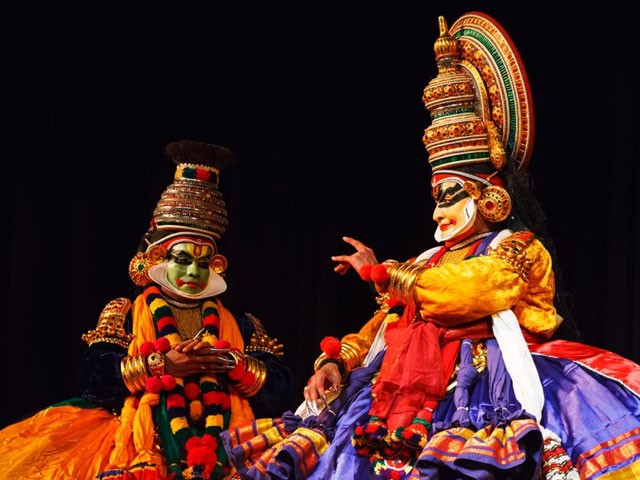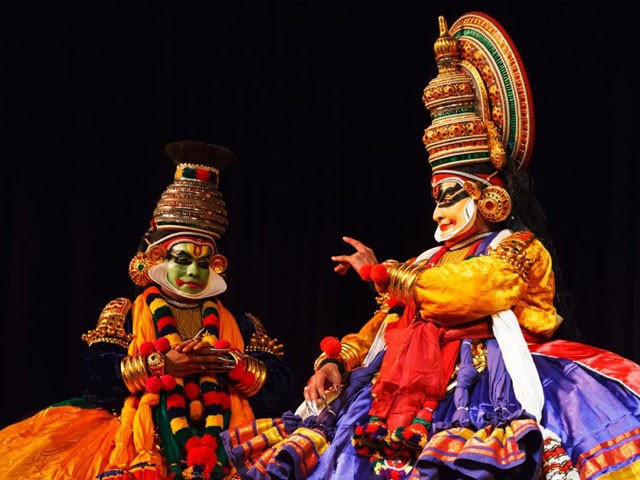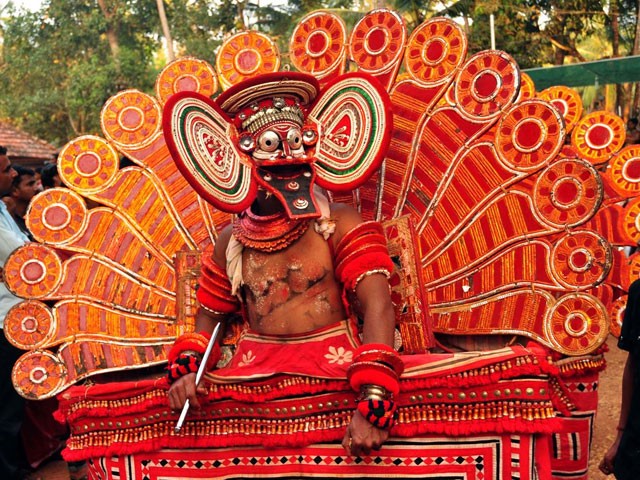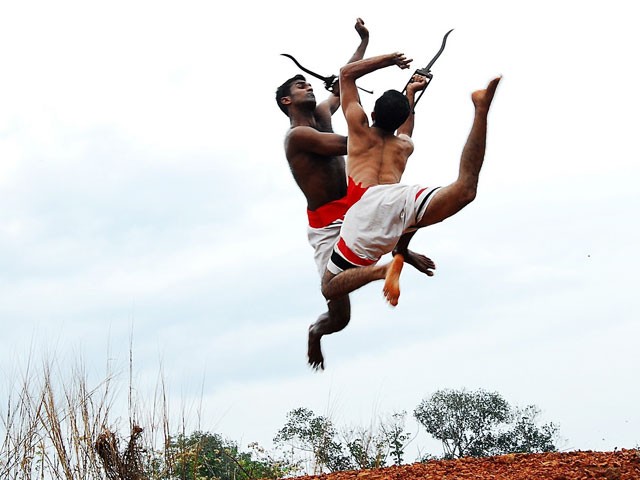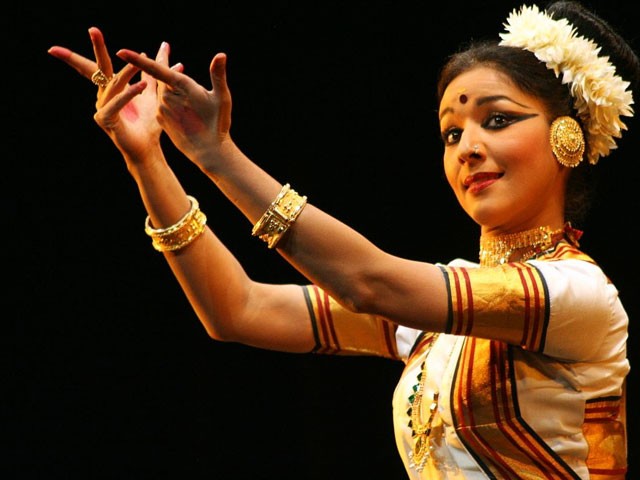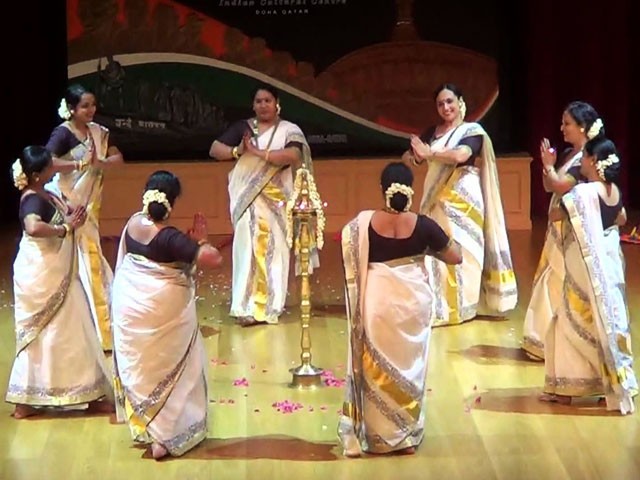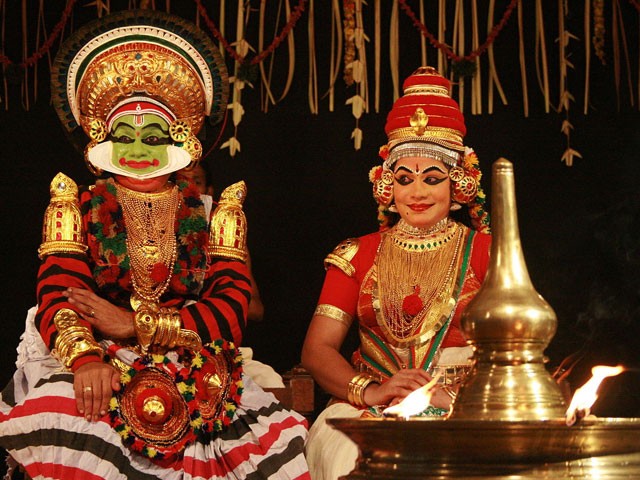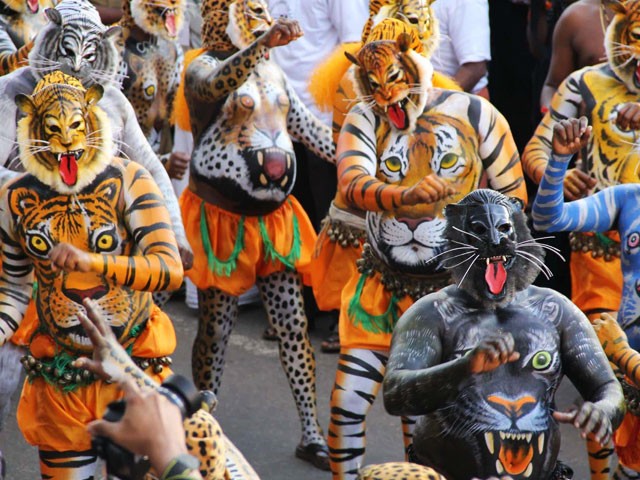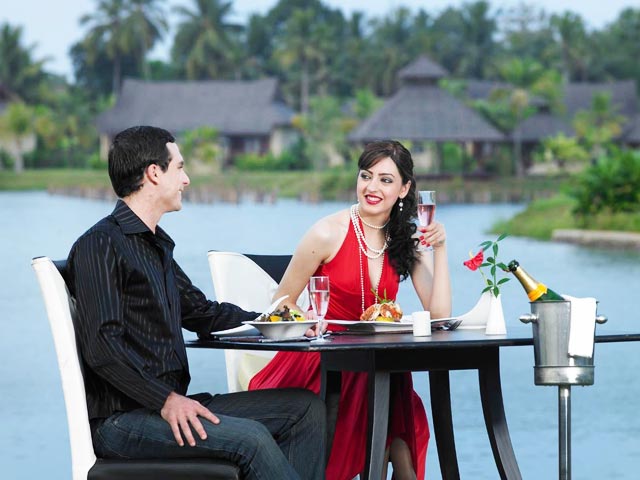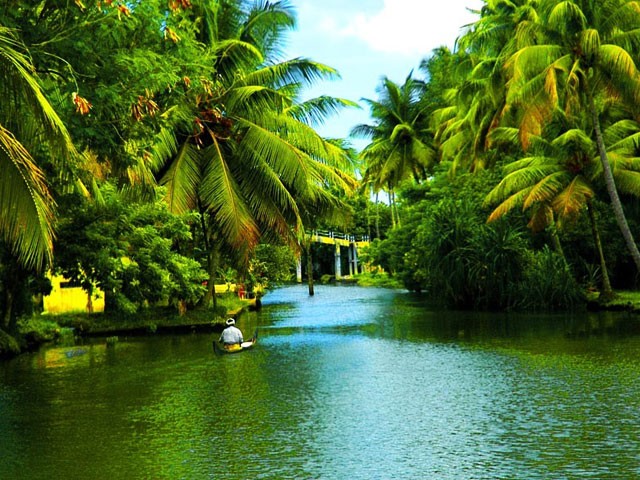Dance – the ultimate expression of human emotion. One dances one’s way to sorrow, to joy and even to fury. It’s where the inner and outer self of a being unites to express itself in beautifully synchronized movements. Kerala’s dance traditions date back thousands of years, and are the best expression of its culture.
From Kathakali to Mohiniyattam, each dance is accompanied with its own peculiar movements and distinctive costumes. Every dance is based on a folk tale and depicts a scene from mythological stories and legends, and is accompanied by two or three singers, who narrate the story along with the dance. The use of props is also very common. If you plan your trip to Kerala, do not miss out on its brilliant and exciting dances.
Here are the 7 most famous traditional art and dance forms of Kerala.
1. Kathakali
Kathakali, in the local language, Malayalam, means “story and play”. The reason behind this is that this form of dance is a fascinating combination of dance, drama, music and religious themes. It also holds the distinction of being the world’s oldest form of theatre. Generally performed by men, this form of dance is acknowledged throughout the world for its uniqueness.
These dances are usually performed on the premises of temples, with the performers dressed in traditional costumes along with detailed makeup. The costume usually involves a headgear, swirled skirt and junk ornaments. It also involves the use of props and a drum called “Chenda”, along with two other accompanying singers.
Read more about Classical Kathakali Dance
[Also Read: Famous Festivals in Kerala That You Must Join and Enjoy]
2. Theyyam
Theyyam is a popular Kerala dance form of the Malabar region of Kerala, and has been practiced by the people for thousands of years. A Dravidian art form, it is a sacred ritual dance to worship the Goddess Kali. This dance form is usually performed in front of the village shrine, along with the drummers. The word “Theyyam” is considered to be a modified form of the word “Daivam”, which means God. Read More about Art and Culture of Kerala
[Click to know about Kerala’s people and lifestyle]
3. Kalaripayattu
Kalaripayattu is the traditional martial art dance form of Kerala and is considered to be the mother of all martial arts. A “Kalari” is the school, or training hall, where this form of martial art is taught. In this dance cum fight form, footwork patterns play a major role. The weapons employed in this form are strikes and sticks.
The practitioners of Kalaripayattu have to undergo an intensive form of physical training, all intended to make the body agile, strong and supple. The ultimate aim is the perfect coordination between the mind and the body. The training also includes specialization in indigenous medical practice too. However, once the course is completed, the practitioner should undergo regular oil massage and keep practicing the steps over and over again.
Check out the best Kerala Tour Packages
[Also Read: 8 Must visit Palaces in Kerala to Discover Rich Culture and Heritage]
4. Mohiniyattam
The name Mohiniyattam stands for “a maiden dancing”. This famous and traditional art form in Kerala involves the use of graceful moments, and is always performed by a solo woman dance. This dance style is believed to be a combination of Kathakali and Bharatnatyam. It’s known to have acquired its name from the Vaishnava devotees.
Originating in the 6th century, it’s regarded as one of the eight Indian classical dances by the Sangeet Natak Akademi. The dance form involves delicate footsteps, classical Carnatic vocal music and sober costumes in white and gold. The head of the dancer is adorned with jasmine garland placed in a traditional manner. It is also, therefore, considered an enchanting dance or the dance of enchantress.
Find some best Kerala tour packages to explore Kerala’s rich culture and traditions:
5. Thirvathirakali
Thirvathirakali is a dance performed by women in order to attain everlasting marital bliss. This dance is performed in the Malayalam month of “Dhanu” (December-January). This extremely popular dance of Kerala is performed to celebrate marital fidelity and female energy. This is because these characteristics are what brought “Kamadeva” (God of Love) back to life after he was reduced to ashes by the wrath of Lord Shiva.
The sinuous movements of this dance, which is executed by a group of dancers around a “nilavilakku”, signifies the amorous charm and the grace of the feminine. The dance is defined by a circular pattern accompanied by the clapping of hands and singing.
[Here is the list of authentic Kerala food]
6. Koodiyattam
Perhaps, no other dance forms reflect the traditions in Kerala as Koodiyattam. It’s known for being the earliest classical art form of Kerala. History has it that this dance form was popular in all temples from the ninth century and became a dramatic presentation before the 15th century. The name “Koodiyattam” literally means “acting together”.
It earlier used to be performed as a combined dance drama conducted by the “Chakkiyars”, a caste among Hindus who provided the male cast and the Nangiars (women of Nambiyar caste), who played the female cast. The performances of this dance last from six to twenty days and its themes are based on several aspects of Hindu mythology.
[You may also read: 8 Most Famous Temples in Kerala]
7. Pulikalli
One of the most popular dance forms in Kerala is the Pulikalli. This dance requires men to paint their whole bare bodies to look like tigers. This exciting dance form is performed during the occasion of the Onam festival at the Swaraj Round in the Thrissur district of Kerala.
The men, resembling tigers, prance and move about like a tiger, their huge bellies bouncing up and down all the while. In preparation for this dance, the performers undergo a laborious process whereby their entire bodies are painted in myriad patterns and colors. At times, the artists may paint the facial features of a lion on their bodies. The theme of the performance involves playing hide and seek with a hunter who is yielding a gun.
[Explore Kerala’s Rich Culture and Traditions with Kerala Heritage Tour Package]
Related Posts:
Must Visit Places in Kerala during Winter
8 Must Visit Museums in Kerala
Kerala Culture and Traditions – 6 little known facts
Lesser-Known Stories of How 14 Kerala Towns Got Their Unique Names

